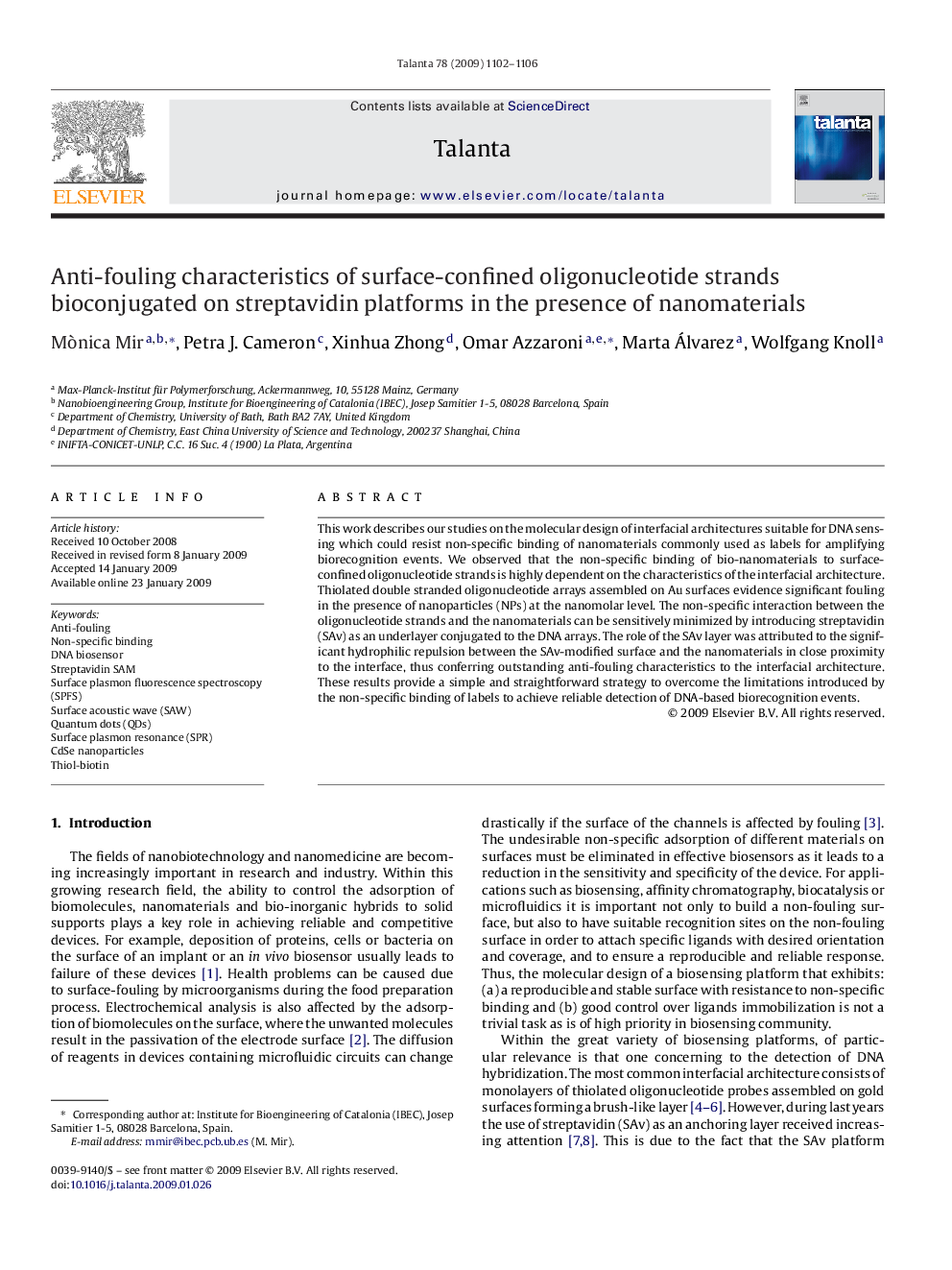| Article ID | Journal | Published Year | Pages | File Type |
|---|---|---|---|---|
| 1244952 | Talanta | 2009 | 5 Pages |
Abstract
This work describes our studies on the molecular design of interfacial architectures suitable for DNA sensing which could resist non-specific binding of nanomaterials commonly used as labels for amplifying biorecognition events. We observed that the non-specific binding of bio-nanomaterials to surface-confined oligonucleotide strands is highly dependent on the characteristics of the interfacial architecture. Thiolated double stranded oligonucleotide arrays assembled on Au surfaces evidence significant fouling in the presence of nanoparticles (NPs) at the nanomolar level. The non-specific interaction between the oligonucleotide strands and the nanomaterials can be sensitively minimized by introducing streptavidin (SAv) as an underlayer conjugated to the DNA arrays. The role of the SAv layer was attributed to the significant hydrophilic repulsion between the SAv-modified surface and the nanomaterials in close proximity to the interface, thus conferring outstanding anti-fouling characteristics to the interfacial architecture. These results provide a simple and straightforward strategy to overcome the limitations introduced by the non-specific binding of labels to achieve reliable detection of DNA-based biorecognition events.
Keywords
Related Topics
Physical Sciences and Engineering
Chemistry
Analytical Chemistry
Authors
Mònica Mir, Petra J. Cameron, Xinhua Zhong, Omar Azzaroni, Marta Álvarez, Wolfgang Knoll,
